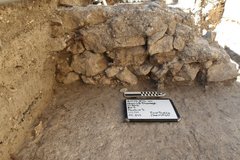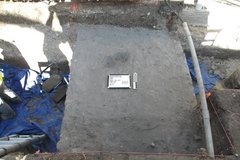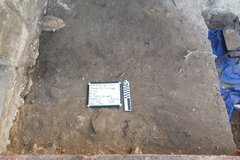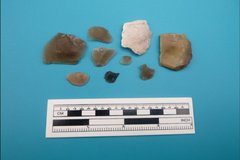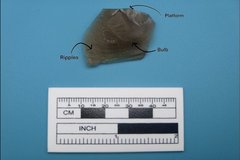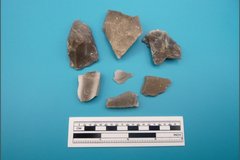Three excavation units were active this week: EUs 2, 4, and 6. Artifact processing also continued in the lab throughout the week.
In EU-2 archaeologists further exposed the stacked limestone alignment previously encountered in EU-3. This alignment is oriented north-south and is about 56 cm in width. The alignment has patches of mortar present and an associated prepared caliche surface. When excavating through the caliche surface a partial spur was recovered. Archaeologists also excavated the soils in the remainder of the unit, with a maximum depth reached of 100 cm below surface.
Excavations in EU-4 revealed a grey, ashy deposit that corresponds to the ashy deposit encountered in EU-5. Artifact counts are also similar to EU-5, with multiple ceramics, metal, and other materials recovered. EU-4 reached a maximum depth of 60 cm below surface.
This week archaeologists opened EU-6. This unit is against the Long Barrack wall and to the west of EU-5. Due to previous landscaping, this unit was very uneven resulting in a wide range of starting elevations. The first level for this unit was excavated throughout the week and archaeologists reached a maximum depth of approximately 30 cm below surface. Even though the soils exhibited signs of previous disturbance, five bags of artifacts were collected. Artifacts included ceramics, metal, glass, and construction materials.

